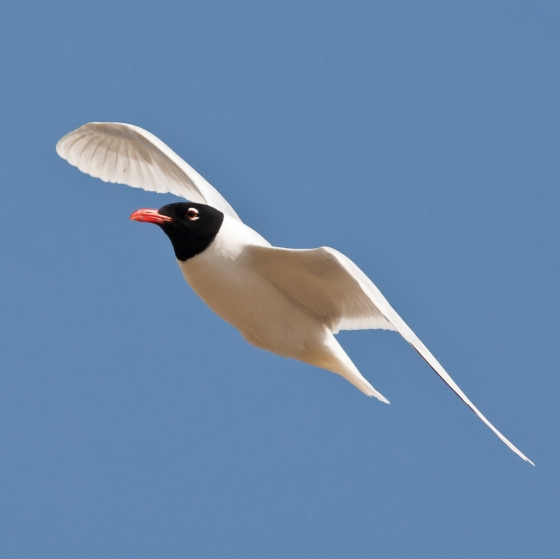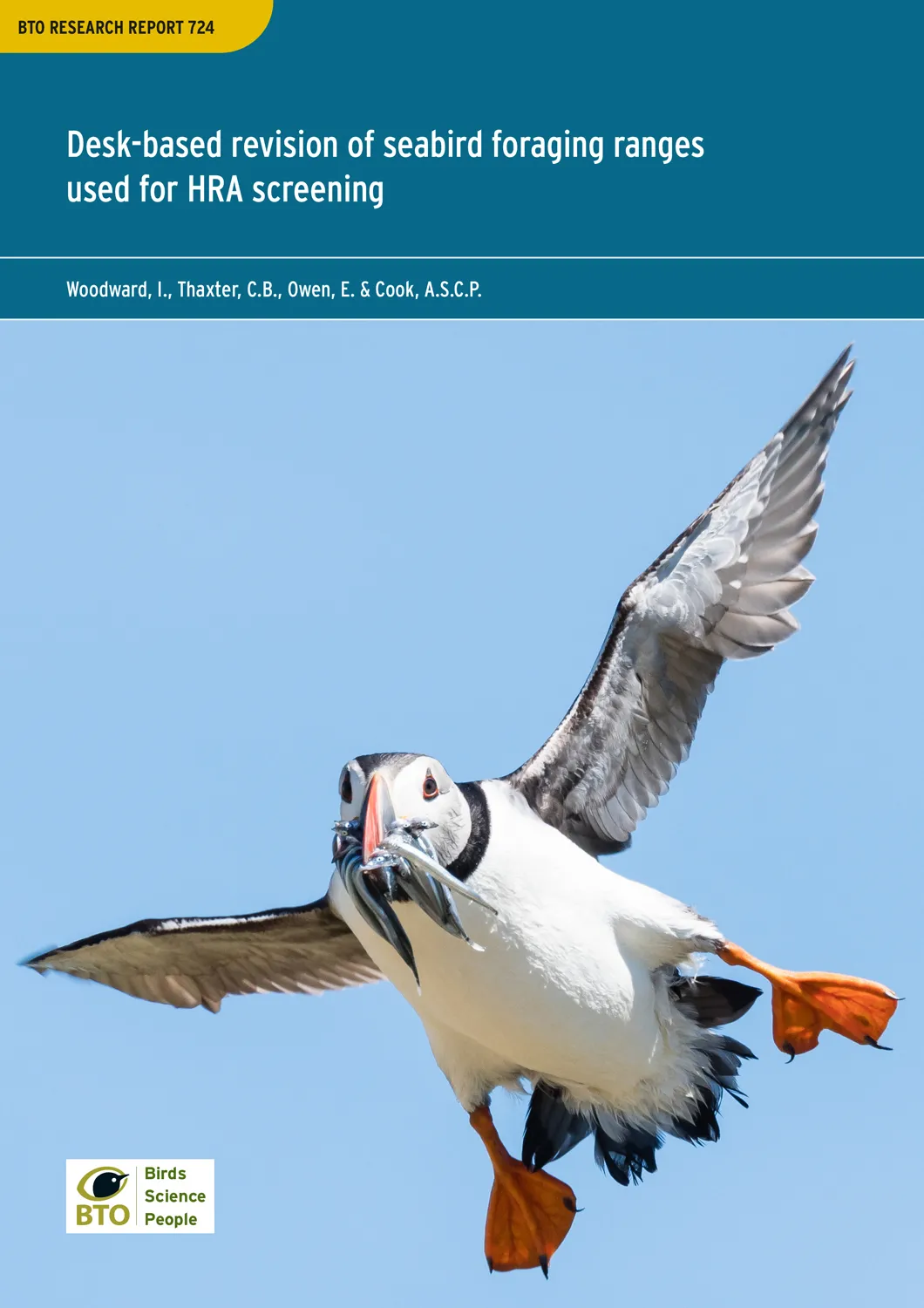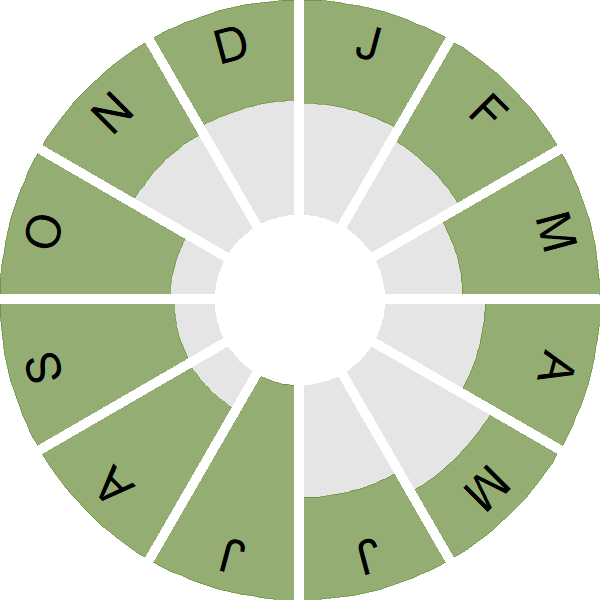Mediterranean Gull

Introduction
The white-winged Mediterranean Gull is very much a bird of our southern and eastern coasts, where it frequents saltmarsh and beach.
The Mediterranean Gull is actually quite scarce around the Mediterranean coast; its name is a misnomer, as the main breeding area for this beautiful gull is to be found around the Black Sea. The first pair of Mediterranean Gulls bred in the UK in 1968 and the species colonised Ireland from the mid-1990s; since then numbers have increased.
Mediterranean Gulls can be seen here throughout the year, ranging more widely during the winter months when individuals may be encountered all around our coast.

Key Stats
Identification
ID Videos
This section features BTO training videos headlining this species, or featuring it as a potential confusion species.
Small Black-headed Gulls
Songs and Calls
Call:
Status and Trends
Conservation Status
Population Change
This species was first recorded as a UK breeding species in Hampshire in 1968 (Taverner 1970). Since then it has expanded its range and now breeds in all four countries of the UK and its population has increased substantially. Numbers reported to the RBBP peaked at 2,400 pairs in 2018 but dropped to c.1,200 pairs in 2019, due mostly to a large reduction at one colony in Hampshire (Eaton et al. 2021).
Distribution
Mediterranean Gulls first bred in Britain in 1968 and have bred annually since the late 1970s. Breeding in Britain is concentrated along the south and east coasts between Dorset and Norfolk but the expansion to inland sites in Britain, where they breed amongst Black-headed Gulls, is one of the most striking changes since the 1988–91 Breeding Atlas. The population is still increasing and spreading northwards. In winter, Mediterranean Gulls have a largely coastal distribution, though careful scanning through flocks of Black-headed Gulls at inland gull roosts and refuse tips probably accounts for the band of occupied squares from northwest England, through the midlands to London and the southeast.
Occupied 10-km squares in UK
2007/08–10/11
or view it on Bird Atlas Mapstore.
2008–11
or view it on Bird Atlas Mapstore.
European Distribution Map
Distribution Change
Change in occupied 10-km squares in the UK
from 1981–84 to 2007–11
or view it on Bird Atlas Mapstore.
from 1968–72 to 2008–11
or view it on Bird Atlas Mapstore.
Seasonality
Mediterranean Gulls can be recorded throughout the year, although there is a post-breeding influx from July onwards.
Weekly pattern of occurrence
The graph shows when the species is present in the UK, with taller bars indicating a higher likelihood of encountering the species in appropriate regions and habitats.

Movement
Britain & Ireland movement
Foreign locations of birds ringed or recovered in Britain & Ireland
Dots show the foreign destinations of birds ringed in Britain & Ireland, and the origins of birds ringed overseas that were subsequently recaptured, resighted or found dead in Britain & Ireland. Dot colours indicate the time of year that the species was present at the location.
- Winter (Nov-Feb)
- Spring (Mar-Apr)
- Summer (May-Jul)
- Autumn (Aug-Oct)

European movements
EuroBirdPortal uses birdwatcher's records, such as those logged in BirdTrack to map the flows of birds as they arrive and depart Europe. See maps for this species here.
The Eurasian-African Migration Atlas shows movements of individual birds ringed or recovered in Europe. See maps for this species here.
Biology
Productivity and Nesting
Nesting timing
Egg measurements
Clutch Size
Survival and Longevity
Survival is shown as the proportion of birds surviving from one year to the next and is derived from bird ringing data. It can also be used to estimate how long birds typically live.
View number ringed each year in the Online Ringing Report.
Lifespan
Biometrics
Wing length and body weights are from live birds (source).
Wing length
Body weight
Ring Size
Classification, names and codes
Classification and Codes
- Order: Charadriiformes
- Family: Laridae
- Scientific name: Ichthyaetus melanocephalus
- Authority: Temminck, 1820
- BTO 2-letter code: MU
- BTO 5-letter code: MEDGU
- Euring code number: 5750
Alternate species names
- Catalan: gavina capnegra mediterrània
- Czech: racek cernohlavý
- Danish: Sorthovedet Måge
- Dutch: Zwartkopmeeuw
- Estonian: karbuskajakas e. mustpea-kajakas
- Finnish: mustanmerenlokki
- French: Mouette mélanocéphale
- German: Schwarzkopfmöwe
- Hungarian: szerecsensirály
- Icelandic: Lónamáfur
- Irish: Sléibhín Meánmhuirí
- Italian: Gabbiano corallino
- Latvian: melngalvas kaija
- Lithuanian: juodagalvis kiras
- Norwegian: Svartehavsmåke
- Polish: mewa czarnoglowa
- Portuguese: gaivota-de-cabeça-preta
- Slovak: cajka ciernohlavá
- Slovenian: cmoglavi galeb
- Spanish: Gaviota cabecinegra
- Swedish: svarthuvad mås
- Welsh: Gwylan Môr y Canoldir
Research
Causes of Change and Solutions
Causes of change
The Mediterranean Gull expanded its range across Europe during the 20th century and this expansion has continued across the UK. The precise reasons for its success are unclear.
Publications (2)
Desk-based revision of seabird foraging ranges used for HRA screening
Author:
Published: 2019
A key step in understanding the possible impacts of a proposed windfarm development is to identify potential interactions between seabird breeding colonies and the proposed development areas. Such interactions are typically assessed using generic information on foraging ranges, derived from academic studies. This report uses the latest data to provide updated estimates of foraging range, which will help to ensure that the best available information is available when new developments are being considered.
01.12.19
BTO Research Reports

The status of the UK’s breeding seabirds
Author:
Published: 2024
Five seabird species are added to the Birds of Conservation Concern Red List in this addendum to the 2021 update, bringing the total number of Red-listed seabird species to 10, up from six since seabirds were last assessed. The Amber List of seabirds moves from 19 to 14 species, and the Green List increases from one to two species.
29.09.24
Papers

More Evidence
More evidence from Conservation Evidence.com
Partners
Citing BirdFacts
If you wish to cite particular content in this page (e.g. a specific value) it is best to use the original sources as linked in the page. For a more general citation of the whole page please use: BTO (20XX) BirdFacts Species: profiles of birds occurring in the United Kingdom. BTO, Thetford (www.bto.org/birdfacts, accessed on xx/xx/xxxx).

